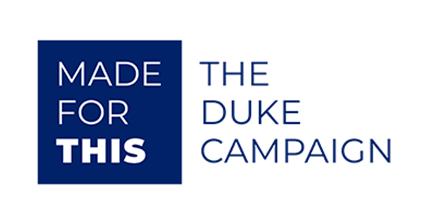Research
The Scaglione lab is generally interested into mechanisms that are dysregulated in neurodegenerative diseases. Our lab has a special interest in rare neurodegenerative diseases including the spinocerebellar ataxias (SCAs) and frontotemporal dementia (FTD). We use a wide array of techniques from structural biology to animal models to understand how mutations that cause these diseases disrupt cellular function. We believe by understanding the pathways that are disrupted in these diseases we may be able to develop therapeutics. Current active projects in the Scaglione lab are outlined below.
Molecular Mechanisms Disrupted in SCA48
SCA48 is a spinocerebellar ataxia caused by mutations in the STUB1 gene that encodes the protein C-terminus of Hsc70 Interacting Protein (CHIP). Patients with SCA48 suffer from ataxia but also develop cognitive and psychiatric symptoms similar to FTD. One major project in the Scaglione lab is to understand the pathways that are disrupted in SCA48. The most well-defined role for CHIP is in binding chaperones to facilitate the degradation of misfolded proteins. CHIP accomplishes this by forming a carboxy-clamp with the C-terminal aspartic acid (D) residue of chaperones. We recently have found that additional proteins that terminate in a C-terminal aspartic acid (termed CAspR proteins; C-terminal Aspartic Acid Residue) can also function as substrate adaptors for the E3 ligase CHIP. One major area of study is identifying the physiological role of the CHIP/CAspR complexes and determining how it is dysregulated in SCA48.
Dissecting the Genetic Interaction between CHIP (SCA48) and TBP (SCA17)
There has been a genetic interaction between mutations in CHIP that cause SCA48 and polyglutamine expansion in TBP, the protein mutated in SCA17. To understand this genetic interaction, we have developed a knock-in mouse model of SCA48 and re-derived a mouse model of SCA17. In collaboration with Craig Lowe’s lab here at Duke we have begun performing Purkinje cell enriched single cell sequencing in the mouse models of SCA48, SCA17, and a digenic model where the SCA48 and SCA17 mouse models are crossed. Using these data we have begun to identify cellular pathways that are dysregulated in the Purkinje cells of these models. In the future we hope to validate that similar disruptions occur in patients with these diseases. We also hope to determine if targeting some of these disrupted pathways can correct disease phenotypes.
Developing Small Molecules to Treat SCA48
Our biophysical studies have identified a discrete structural change in SCA48 mutant CHIP. We have also found that this structural change can be reversed. We have performed an initial small scale drug screen and identified hit molecules that can restore this structural defect and can serve as a positive control for a future large scale drug screen. We are currently validating assays and developing a pipeline for developing therapeutics for SCA48.
Understanding the Role of Repeat-Rich Sequences in Dictyostelium
The social amoeba or cellular slime mold Dictyostelium discoideum encodes for nearly 10,000 proteins that contain homopolymeric amino acid tracts. This includes many proteins with long polyglutamine (polyQ) tracts. Long polyQ tracts are known to aggregate and cause a class of nine neurodegenerative diseases including Huntington’s disease, SCA1, and SCA3. We have found that Dictyostelium are largely resistant to polyQ aggregates and seek to further understand how Dictyostelium accomplish this and identify factors that regulate polyQ aggregation.
In addition to polyQ tracts, Dictyostelium also encodes for many proteins that contain long polyasparagine (polyN) tracts. PolyQ/N rich regions are hallmarks for prion proteins. Upon searching the Dictyostelium proteome we and others have found that nearly 25% of the Dictyostelium proteome is expected to form prion. Currently we are exploring functional roles for prion proteins in Dictyostelium Biology
Biography
Matt has an undergraduate degree in Biology from McKendree University. For his graduate work Matt attended Saint Louis University’s School of Medicine where he studied mechanisms that regulate ubiquitin transfer. During his graduate studies Matt became interested in understanding protein homeostasis in neurodegenerative diseases and later joined Dr. Henry Paulson’s lab at the University of Michigan. In Dr. Paulson’s lab Matt investigated mechanisms that regulate the neuroprotective E3 ligase CHIP and identified Ube2w as the first enzyme that mediates N-terminal ubiquitination. Following his postdoctoral studies Matt joined the Department of Biochemistry at the Medical College of Wisconsin as an Assistant Professor. At the Medical College of Wisconsin Matt became interested in how protein homeostasis in the social amoeba Dictyostelium discoideum and this became the main focus of his research. In January of 2019 Matt moved to the Duke Center for Neurodegeneration and Neurotherapeutics at Duke University. Matt is currently at Assistant Professor in the Department of Molecular Genetics and Microbiology with a secondary appointment in the Department of Neurology at Duke University.
Lab Members
Alumni
Postdoctoral Associates
Kuili Fang, PhD
PhD Students
Stephanie Santarriaga, PhD, Research Fellow in Dr. Rakesh Karmacharya’s group, Harvard
Adam Kanack, PhD, Postdoctoral Fellow in Dr. Nancy Dahm’s group, Medical College of Wisconsin
Master’s Students
Kelechi Ndukwe, MS, PhD Student, City University of New York
Madeline Brunner, MS, Clinical Consultant, Triage Consulting
Undergraduate Students
Nathaniel Rein, Graduate Student, University of Wisconsin Milwaukee
Brittany Lyda, Physician’s Assistant Student, Marquette University
Chandler McElrath, Graduate Student, Medical College of Wisconsin
Sara Rubovits, Post Baccalaureate Fellow, NIH
Austin Goff, Medical Student, AT Still University
Post Baccalaureate Researchers
Holland Galante, Graduate Student, North Dakota State University
Xiang Feng, OBGYN Resident, University of Louisville
Kayla Rude, Graduate Student, University of California Davis
Oliver Newsom, MD/PhD Student, University of Washington
Alicia Fikejs, Physician’s Assistant Student, Barry University
Katy LaFond, Graduate Student, Medical College of Wisconsin
Mahmoud Abu Eid, Graduate Student, Medical College of Wisconsin
Publications
Independent lab
- Tsou WL, Burr AA, Ouyang M, Blount JR, Scaglione KM, Todi SV. Ubiquitination regulates the neuroprotective function of the deubiquitinase ataxin-3 in vivo. J Biol Chem. 2013 Nov 29;288(48):34460-9. PMCID: PMC3843061
- Blount JR, Tsou WL, Ristic G, Burr AA, Ouyang M, Galante H, Scaglione KM, Todi SV. Ubiquitin-binding site 2 of ataxin-3 prevents its proteasomal degradation by interacting with Rad23. Nat Commun. 2014 Aug 21;5:4638. PMCID: PMC4237202
- Zhang H, Amick J, Chakravarti R, Santarriaga S, Schlanger S, McGlone C, Dare M, Nix JC, Scaglione KM, Stuehr DJ, Misra S, Page RC. A bipartite interaction between Hsp70 and CHIP regulates ubiquitination of chaperoned client proteins. Structure. 2015 Mar 03;23(3):472-482. PMCID: PMC4351142
- Faggiano S, Menon RP, Kelly GP, Todi SV, Scaglione KM, Konarev PV, Svergun DI, Paulson HL, Pastore A. Allosteric regulation of deubiquitylase activity through ubiquitination. Front Mol Biosci. 2015;2:2. PMCID: PMC4428445
- Santarriaga S, Petersen A, Ndukwe K, Brandt A, Gerges N, Bruns Scaglione J, Scaglione KM. The Social Amoeba Dictyostelium discoideum Is Highly Resistant to Polyglutamine Aggregation. J Biol Chem. 2015 Oct 16;290(42):25571-8. PMCID: PMC4646202
- Wang B, Merillat SA, Vincent M, Huber AK, Basrur V, Mangelberger D, Zeng L, Elenitoba-Johnson K, Miller RA, Irani DN, Dlugosz AA, Schnell S, Scaglione KM, Paulson HL. Loss of the Ubiquitin-conjugating Enzyme UBE2W Results in Susceptibility to Early Postnatal Lethality and Defects in Skin, Immune, and Male Reproductive Systems. J Biol Chem. 2016 Feb 05;291(6):3030-42. PMCID: PMC4742764
- Ristic G, Tsou WL, Guzi E, Kanack AJ, Scaglione KM, Todi SV. USP5 Is Dispensable for Monoubiquitin Maintenance in Drosophila. J Biol Chem. 2016 Apr 22;291(17):9161-72. PMCID: PMC4861482
- Lass A, Cocklin R, Scaglione KM, Skowyra M, Korolev S, Goebl M, Skowyra D. Erratum to: The loop-less Cdc34 E2 mutant defective polyubiquitination in vitro and in vivo supports yeast growth in a manner dependent on Ubp14 and Cka2. Cell Div. 2016;11:13. PMCID: PMC5054535
- Sutton JR, Blount JR, Libohova K, Tsou WL, Joshi GS, Paulson HL, Costa MDC, Scaglione KM, Todi SV. Interaction of the polyglutamine protein ataxin-3 with Rad23 regulates toxicity in Drosophila models of Spinocerebellar Ataxia Type 3. Hum Mol Genet. 2017 04 15;26(8):1419-1431. PMCID: PMC6075452
- Wang B, Zeng L, Merillat SA, Fischer S, Ochaba J, Thompson LM, Barmada SJ, Scaglione KM, Paulson HL. The ubiquitin conjugating enzyme Ube2W regulates solubility of the Huntington’s disease protein, huntingtin. Neurobiol Dis. 2018 Jan;109(Pt A):127-136. PMCID: PMC5973538
- Kanack AJ, Newsom OJ, Scaglione KM. Most mutations that cause spinocerebellar ataxia autosomal recessive type 16 (SCAR16) destabilize the protein quality-control E3 ligase CHIP. J Biol Chem. 2018 Feb 23;293(8):2735-2743. PMCID: PMC5827432
- Santarriaga S, Haver HN, Kanack AJ, Fikejs AS, Sison SL, Egner JM, Bostrom JR, Seminary ER, Hill RB, Link BA, Ebert AD, Scaglione KM. SRCP1 Conveys Resistance to Polyglutamine Aggregation. Mol Cell. 2018 Jul 19;71(2):216-228.e7. PMCID: PMC6091221
- Santarriaga S, Fikejs A, Scaglione J, Scaglione KM. A Heat Shock Protein 48 (HSP48) Biomolecular Condensate Is Induced during Dictyostelium discoideum Development. mSphere. 2019 Jun 19;4(3).314-319 PMCID: PMC6584373
- Madrigal SC, McNeil Z, Sanchez-Hodge R, Shi CH, Patterson C, Scaglione KM, Schisler JC. Changes in protein function underlies the disease spectrum in patients with CHIP mutations. J Biol Chem. 2019 Dec 13;294(50):19236-19245 PMCID: PMC6916485
- Kanack AJ, Vittal V, Haver H, Keppel T, Gundry RL, Klevit RE, Scaglione KM. UbcH5 Interacts with Substrates to Participate in Lysine Selection with the E3 Ubiquitin Ligase CHIP. Biochemistry. 2020 May 13 (online)
Postdoctoral Fellow
- Winborn BJ, Travis SM, Todi SV, Scaglione KM, Xu P, Williams AJ, Cohen RE, Peng J, Paulson HL. The deubiquitinating enzyme ataxin-3, a polyglutamine disease protein, edits Lys63 linkages in mixed linkage ubiquitin chains. J Biol Chem. 2008 Sep 26;283(39):26436-43. PMCID: PMC2546540
- Todi SV, Winborn BJ, Scaglione KM, Blount JR, Travis SM, Paulson HL. Ubiquitination directly enhances activity of the deubiquitinating enzyme ataxin-3. EMBO J. 2009 Feb 18;28(4):372-82. PMCID: PMC2646149
- Todi SV, Scaglione KM, Blount JR, Basrur V, Conlon KP, Pastore A, Elenitoba-Johnson K, Paulson HL. Activity and cellular functions of the deubiquitinating enzyme and polyglutamine disease protein ataxin-3 are regulated by ubiquitination at lysine 117. J Biol Chem. 2010 Dec 10;285(50):39303-13. PMCID: PMC2998082
- Lass A, Cocklin R, Scaglione KM, Skowyra M, Korolev S, Goebl M, Skowyra D. The loop-less tmCdc34 E2 mutant defective in polyubiquitination in vitro and in vivo supports yeast growth in a manner dependent on Ubp14 and Cka2. Cell Div. 2011 Mar 31;6:7. PMCID: PMC3080790
- Scaglione KM, Zavodszky E, Todi SV, Patury S, Xu P, Rodríguez-Lebrón E, Fischer S, Konen J, Djarmati A, Peng J, Gestwicki JE, Paulson HL. Ube2w and ataxin-3 coordinately regulate the ubiquitin ligase CHIP. Mol Cell. 2011 Aug 19;43(4):599-612. PMCID: PMC3166620
- Thompson AD, Scaglione KM, Prensner J, Gillies AT, Chinnaiyan A, Paulson HL, Jinwal UK, Dickey CA, Gestwicki JE. Analysis of the tau-associated proteome reveals that exchange of Hsp70 for Hsp90 is involved in tau degradation. ACS Chem Biol. 2012 Oct 19;7(10):1677-86. PMCID: PMC3477299
- Todd PK, Oh SY, Krans A, He F, Sellier C, Frazer M, Renoux AJ, Chen KC, Scaglione KM, Basrur V, Elenitoba-Johnson K, Vonsattel JP, Louis ED, Sutton MA, Taylor JP, Mills RE, Charlet-Berguerand N, Paulson HL. CGG repeat-associated translation mediates neurodegeneration in fragile X tremor ataxia syndrome. Neuron. 2013 May 08;78(3):440-55. PMCID: PMC3831531
- Scaglione KM, Basrur V, Ashraf NS, Konen JR, Elenitoba-Johnson KS, Todi SV, Paulson HL. The ubiquitin- conjugating enzyme (E2) Ube2w ubiquitinates the N terminus of substrates. J Biol Chem. 2013 Jun 28;288(26):18784-8. PMCID: PMC3696654
- Smith MC, Scaglione KM, Assimon VA, Patury S, Thompson AD, Dickey CA, Southworth DR, Paulson HL, Gestwicki JE, Zuiderweg ER. The E3 ubiquitin ligase CHIP and the molecular chaperone Hsc70 form a dynamic, tethered complex. Biochemistry. 2013 Aug 13;52(32):5354-64. PMCID: PMC3856692
- Blair LJ, Nordhues BA, Hill SE, Scaglione KM, O’Leary JC 3rd, Fontaine SN, Breydo L, Zhang B, Li P, Wang L, Cotman C, Paulson HL, Muschol M, Uversky VN, Klengel T, Binder EB, Kayed R, Golde TE, Berchtold N, Dickey CA. Accelerated neurodegeneration through chaperone-mediated oligomerization of tau. J Clin Invest. 2013 Oct;123(10):4158-69. PMCID: PMC3784538
- Tsou WL, Burr AA, Ouyang M, Blount JR, Scaglione KM, Todi SV. Ubiquitination regulates the neuroprotective function of the deubiquitinase ataxin-3 in vivo. J Biol Chem. 2013 Nov 29;288(48):34460-9. PMCID: PMC3843061
- Faggiano S, Menon RP, Kelly GP, McCormick J, Todi SV, Scaglione KM, Paulson HL, Pastore A. Enzymatic production of mono-ubiquitinated proteins for structural studies: The example of the Josephin domain of ataxin-3. FEBS Open Bio. 2013;3:453-8. PMCID: PMC3829987
- Vittal V, Shi L, Wenzel DM, Scaglione KM, Duncan ED, Basrur V, Elenitoba-Johnson KS, Baker D, Paulson HL, Brzovic PS, Klevit RE. Intrinsic disorder drives N-terminal ubiquitination by Ube2w. Nat Chem Biol. 2015 Jan;11(1):83-9. PMCID
Graduate Student
- Deffenbaugh AE, Scaglione KM, Zhang L, Moore JM, Buranda T, Sklar LA, Skowyra D. Release of ubiquitin- charged Cdc34-S – Ub from the RING domain is essential for ubiquitination of the SCF(Cdc4)-bound substrate Sic1. Cell. 2003 Sep 05;114(5):611-22.
- Kim HT, Kim KP, Lledias F, Kisselev AF, Scaglione KM, Skowyra D, Gygi SP, Goldberg AL. Certain pairs of ubiquitin-conjugating enzymes (E2s) and ubiquitin-protein ligases (E3s) synthesize nondegradable forked ubiquitin chains containing all possible isopeptide linkages. J Biol Chem. 2007 Jun 15;282(24):17375-86.
- Scaglione KM, Bansal PK, Deffenbaugh AE, Kiss A, Moore JM, Korolev S, Cocklin R, Goebl M, Kitagawa K, Skowyra D. SCF E3-mediated autoubiquitination negatively regulates activity of Cdc34 E2 but play nonessential role in the catalytic cycle in vitro and in vivo. Mol Cell Biol. 2007 Aug;27(16):5860-70. PMCID: PMC1952114
- Lass A, Cocklin R, Scaglione KM, Skowyra M, Korolev S, Goebl M, Skowyra D. The loop-less tmCdc34 E2 mutant defective in polyubiquitination in vitro and in vivo supports yeast growth in a manner dependent on Ubp14 and Cka2. Cell Div. 2011 Mar 31;6:7. PMCID: PMC3080790
Make a Gift
At Duke University School of Medicine, donors play a vital role in fostering innovation, enhancing patient care, and training the next generation of health care leaders. Your contributions not only sustain and elevate existing programs but also pave the way for groundbreaking discoveries.

You can support the work of the Department of Molecular Genetics and Microbiology by making a gift to the Matt Scaglione Laboratory.



